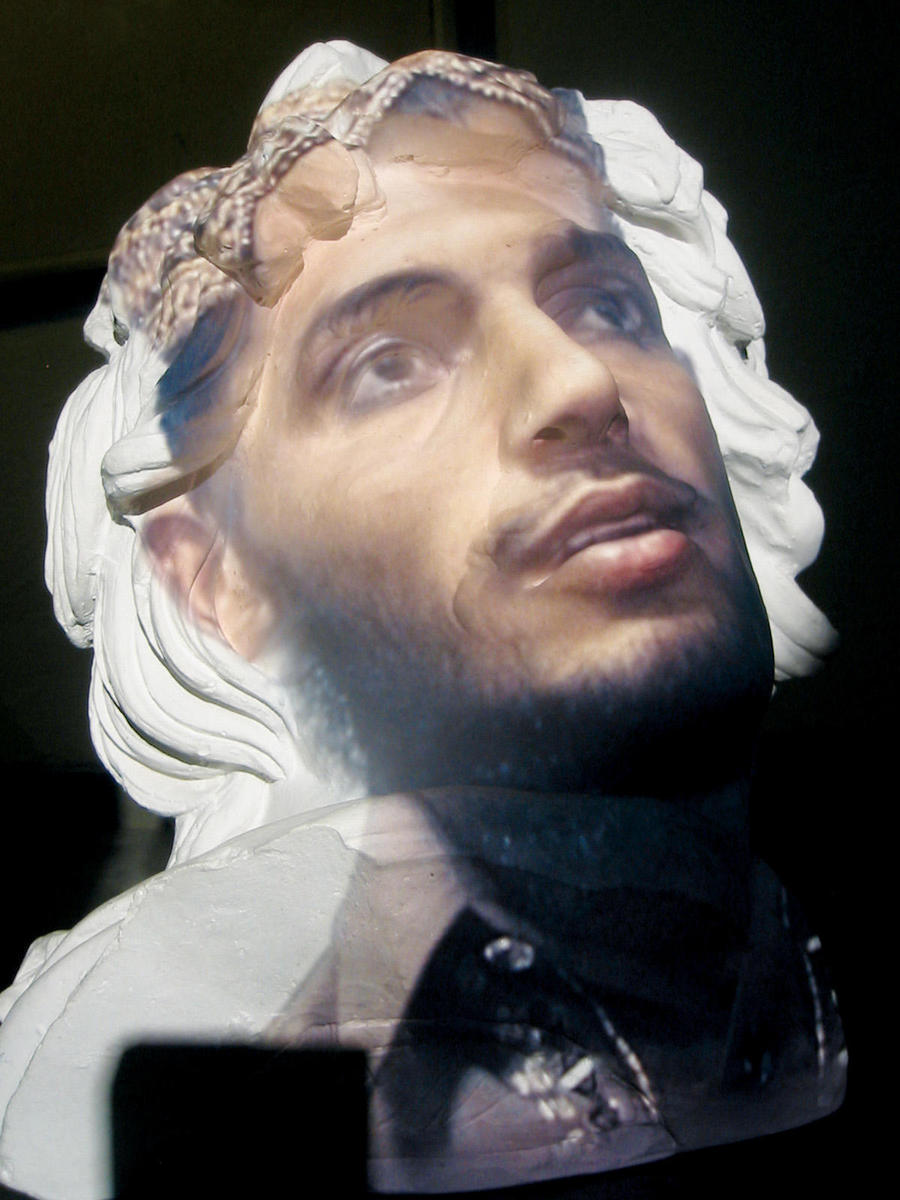
London
The Politics of Fear
Albion Gallery
March 27–May 31, 2007
The title of this group exhibition by eleven international artists was likely a reference to Frank Furedi’s book, The Politics of Fear: Beyond Left and Right (2005), which addresses the exhaustion of public life in the UK and the US. In his text, Furedi argues for a new conception of politics, one that re-moralizes, and finally humanizes, the political realm.
As interesting as the allusion was, it was difficult to identify a common thread that united the artists in this exhibition and in turn tied them to Furedi’s notion that fear is now both zeitgeist and also cause for resistance. The works on display included projected image, film, performance, interactive video, assemblages, and sculpture from around the world (the global reach was considerable). Spread out in Albion’s spacious circular gallery, each artist was given the opportunity to address their own conception of the “culture of fear” in different ways. Nevertheless, the show’s inclusionary instinct was not always effective, as at times one felt that certain pieces had been thrown in simply to fill the space.
A perfect example of such a hit-and-miss approach was Shilpa Gupta’s work. Untitled evoked a poetic approach to politics, exploring the impossibility of creating borders and boundaries to separate the mutable elements of rain, clouds, and the sky. The power of the text piece came from the material employed; made from the kind of tape used by the London police to cordon off areas of the street, it was evocative of conflict and war, and of the impossibility and necessity of boundaries and borders. But this subtlety was lost in the accompanying photographs of metal fences covered in the same tape and in a confusing and banal interactive video installation of teenage girls dressed in combat clothes performing a series of mechanical gestures.
A similar problem beset Rashid Rana’s Meeting Point, a digital animation of two planes flying toward each other, projected so that the corner of the gallery wall became their implied destination. The work had none of the impact of his large-scale collages, displayed elsewhere in the exhibition, particularly Veil, which, like much of his work, relied on the difference between seeing at a distance and seeing from up close. From afar, three veiled figures emerged from a grid of what appeared to be the enlarged pixels of a photograph; closer inspection revealed that the entire image was comprised of minute pornographic photographs. The inversion of Orientalism as a grid of representation was wonderfully developed — the pornographic gaze, and the desire to see, know, and control aroused by the veil as a Western construct, came together to make us think about the connections between vision, violence, and lens-based media. This kind of attention to the tyranny of the visual was evident throughout the show, but not always managed as successfully.
Reza Aramesh’s I Am A Believer was a powerful enactment of the ritual changing of the guards, staged in Trafalgar Square in 2006, using second-generation immigrant men. Nevertheless, the performance lost its powerful ceremonial quality when projected in the gallery space, making it appear too casual and accidental an event to pose an impact.
Perhaps the most problematic work on display was that of artists Jorge and Lucy Orta. Fallujah-Clinic Variations, consisting of sets of hospital cots and children’s body bags, created a deeply chilling effect but was seriously undermined by Fallujah — In the name of God, which ran the risk of reifying a pornography of violence. A large grid of journalists’ photographs of the war in Iraq, including pictures of the notorious torture of prisoners in Abu Ghraib, were placed behind a pair of open metal doors that resembled the back of an ambulance van. Surely the circulation of such images on the internet no longer necessitates the need to hang them in galleries as if to expose political realities? We should be skeptical of such crude forms of artistic resistance and protest.
The curatorial intention behind this exhibition seemed to be the offering of a collective response to a perceived political crisis. The press release referenced the prevalence of fear in the current political moment, against which these artists proposed to speak with a unified voice. Last autumn’s Uncertain States of America at the Serpentine Gallery and Media Burn at Tate Modern, too, were symptomatic of an ongoing attempt within the arts to resuscitate collective opposition. But they remain, in the end, attempts; with such lofty ambitions, we have a long way to go.